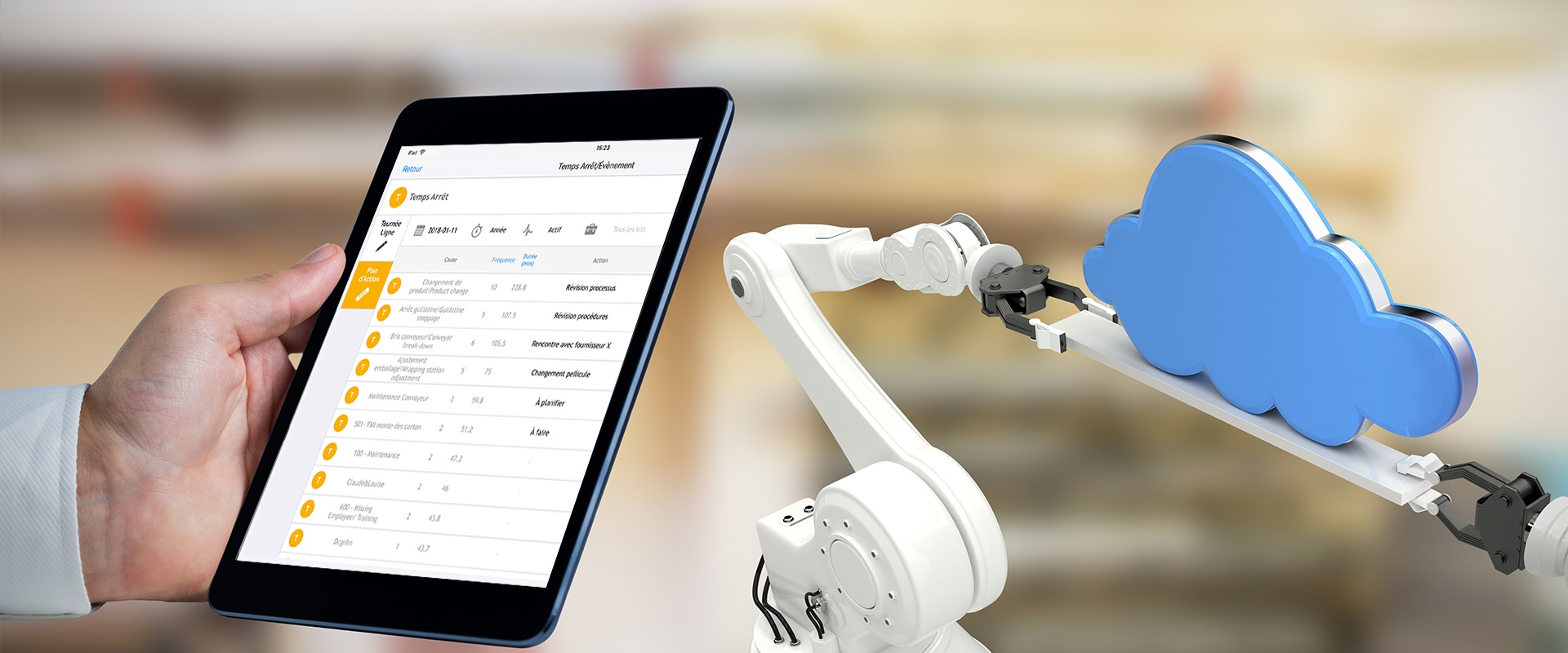The practices of lean manufacturing and the uses of lean technology serve the purpose of reducing waste and maximizing efficiency in manufacturing facilities. When manufacturing waste becomes an issue, the cost per product produced increases—but maximizing efficiency can counteract this increase. Using lean technology to implement lean manufacturing principles can accelerate the time to value of lean manufacturing implementations.
Eliminating Waste with Lean Technology
Many of the waste types targeted by lean manufacturing can be minimized or even eliminated by strengthening and encouraging communication between managers and factory floor staff. Unfortunately, in a distributed setting such as a manufacturing plant, the right information may not be in the right hands to make progress toward eliminating manufacturing waste. This is where lean technology comes into play.
Lean technology gathers the right data from the manufacturing process and presents the right information to decision makers up and down the value stream in order to improve operations with lean practices. Below, we address two commonly used lean manufacturing tools and how the implementation of lean technology can facilitate the application of the tool.
Value Stream Mapping (VSM)
Value stream mapping (VSM) is a lean manufacturing tool intended to redesign a manufacturing system’s methods of production in order to ensure that only steps that add value to the end product are used. When a factory implements value stream mapping, each step of a manufacturing process is evaluated, and the speed and volume of material or product being transferred from one step to another is recorded.
When used in tandem with lean technology, VSM can find areas in a process where workplace flow is interrupted or inefficient, where defects in products originate from, and other valuable production metrics. Using VSM shows where waste occurs in a process, allowing a facility to take steps to eliminate it.
Poka-Yoke
Poka-yoke seeks to minimize waste by creating a standardized process for production to minimize employee errors. The goal of poka-yoke is to either try to prevent mistakes before they happen or identify mistakes after they’ve been made. Poka-yoke’s methodology includes creating good, ergonomic accessibility for parts and materials to reduce the likelihood that employees will make mistakes.
Additionally, poka-yoke includes multiple methods to check parts for mistakes, including the contact method, the fixed-value method, and the motion-step method. Minimizing defective parts using poka-yoke and the technology to support this method will help to dramatically reduce waste.
Applying Lean Technology
Lean technology includes systems that monitor the actual metrics of the manufacturing process 24/7 in real time. Lean technology can identify problems or downtime events in real time, follow the flow of parts in production, and measure changeover times, among other metrics that apply directly to lean manufacturing programs.
Lean technology gathers machine data, houses it in the cloud, and processes it to provide intuitive reports and dashboards that are applicable to each key role in a manufacturing environment. Dashboards display KPIs based upon real-time data and historical trends that enable decisions that drive waste toward zero. When implemented with proven lean manufacturing techniques, lean technology accelerates the business results of implementing lean.
Because it is cloud-based, lean technology makes information accessible to all employees at all times and allows supervisors to make note of which workstations and shifts are being monitored at any given time. When all employees have 24/7 access to the system, anyone within the company can identify problems and suggest improvements, making it a company-wide goal to reduce waste. Additionally, noting which workstations and shifts are being monitored allows the company to get an accurate idea of exactly where and when waste occurs.
Improving Profitability with Lean Technology
Improving profitability in a company will inherently require either increasing revenue or cutting costs; unfortunately, the only impact manufacturing facilities can have on a company’s profitability is to cut costs. With that in mind, cutting costs using lean technology must become the primary focus of improvement projects within manufacturing facilities.
The best and easiest way for manufacturing facilities to cut costs is to minimize waste using tools such as those discussed above. Wasted material, time, and energy are all opportunities for improvement within a company. Raw material for manufacturing is invested capital, and if it spoils or is made into a defective product, this is wasted money.
The Key to Manufacturing Profitability is to Reduce Costs
Wasted time can involve paying employees for no generated profit during downtime events. Time waste increases the cost per product because fewer products are produced in the same amount of time. Energy, be it electrical, mechanical, or physical, will either cost companies money in electrical bills for their facilities or cost them when employees become injured due to overworking.
From a manufacturing standpoint, the key to increasing profits is to reduce costs, and factories can most effectively reduce costs by reducing waste. Using lean technology allows companies to identify areas where waste occurs and even prevent waste from occurring entirely.
How Worximity Can Help
The Worximity solution gives you immediate insights into your manufacturing KPIs in an easy and cost-effective way. With Worximity, you can gather real-time production data, create dashboards by user role, and analyze trends that will enable you to quickly ascertain which lean manufacturing initiatives are producing gains.
Articles on the Worximity blog will provide you with the roadmap to understanding the value lean technology can bring to your business, help you to build a business case for the implementation of a pilot program, and show you how to make the most of lean technology as you progress through your lean manufacturing implementation program. Subscribe to the Worximity blog today.

















